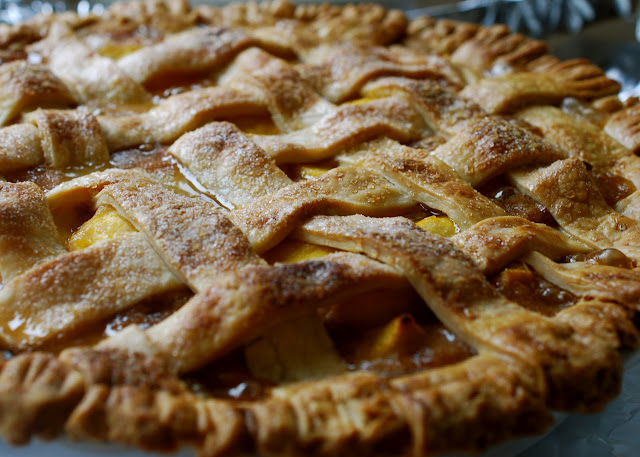Lisa’s Gazpacho
 |
| Gazpacho--note the drizzled olive oil |
Oh my, there are so very many ways
to make gazpacho – the salad in a soup bowl. I have followed numerous recipes
but always come back to this one and always to rave reviews. During the long, hot
summers, the Andalucía region in Spain cools itself down with chilled gazpacho,
a hearty and pungent thirst-quenching soup. It is a raw, cold soup – never cooked
– and always served cold. Gazpacho is fresh, textured and light – a delicious
summer treat. I like CRUNCH in my gazpacho – I will not use the food processor
nor will it ever see the blender. I love the even chunks of garden goodness
with each bite and avoid the blended concoctions. It takes a bit more time to
do the chopping, but the end result is well worth it.
 |
| The most important ingredient! |
Lisa was my roommate while I was a
medical student, many years ago. One of us would make this often and eat it
regularly, especially in the hot Boston summers. It is best made with
vine-ripened fresh tomatoes from your farmers market – most any kind or color will
work. If they are unavailable or it’s the dead of winter – this is still
stunning with all canned tomatoes. Just please get a good quality Italian San
Marzano brand. Luckily, they are readily available in most markets. So while
this harkens to many hours of studying, at home or in a library (where I had to
hide the food), the soup is so spectacular that I had to share. It is so easy
to make – actually better the next day – and served cold. What a great summer
healthy treat!
- 3 or more large garlic cloves, peeled & split
- 4 C Tomato juice
- 2 small green or red bell peppers, seeded & evenly chopped
- 3-4 large fresh tomatoes, chopped
- 16 oz canned diced tomatoes – I prefer Italian brands
- ½ C finely chopped sweet onion
- 1 large cucumber, peeled, seeded and evenly chopped
- ¼ C evenly chopped celery
- 1/3 C evenly chopped zucchini (optional)
- 2+ Tb extra-virgin olive oil
- 2+ Tb red wine vinegar
- 2 tsp salt
- Fresh ground pepper
- 6 or more drops hot sauce (e.g., Tabasco)
- Garnishes: cilantro, sour cream, avocado, chunky bread, or shrimp
Cut 3-4 garlic cloves longitudinally and impale each half on a
toothpick. Most important, count, and remember, how many garlic
clove-toothpick combos you actually create. You will want to retrieve them
later before serving. This is a wonderful way to imbue the garlic flavor
without risking biting into a raw garlic clove.
 |
| Garlic on a stick...makes it easy to find them later |
Evenly chop (about 3/4-inch dice) 2 small green or red bell peppers, 3-4
large vine-ripened fresh tomatoes, 1 medium sweet onion, 1 large cucumber, 1-2
stalks celery, and, if using, 1-2 zucchini. Using a large bowl, gently mix 4 C tomato juice and 16 oz canned diced
Italian tomatoes. If fresh tomatoes are unavailable, double the amount of
canned diced tomatoes. Gently add all chopped vegetables and 2 Tb red wine vinegar, 2 Tb extra-virgin
olive oil, 2 tsp kosher salt, freshly ground pepper to taste and 6 drops of hot
sauce. Taste – go ahead take 2! Now
is the time to adjust seasoning by adding additional salt, hot sauce and red
wine vinegar. Carefully add the garlic clove-toothpick combos and gently stir
throughout. Allow the soup to sit in refrigerator for several hours, or
overnight, before serving. This allows to the flavors “to marry” and blend as
well as imbuing the soup with garlic flavor.
 |
| More tomatoes.... |
 |
| Chopped veggies for the gazpacho |
The most important part before serving
is to carefully remove the garlic-toothpicks from the soup. Now it is handy to
remember exactly how many you actually added in the beginning! Serve cool from
the refrigerator – with 1-3 garnishes. Our favorites are cilantro, a dollop of
sour cream, avocado or grilled shrimp or bread. Serve with a drizzle of
wonderful olive oil.
 |
| Toothpick hunt...find them all before serving! |
This is a bright, refreshing and
surprisingly filling salad in a soup bowl, which would work well for lunch or
dinner – as starter, side dish or entrée! Gazpacho is a high-acid dish that can
kill many wines. A salad with vinaigrette is about the biggest anti-wine dish
you can come up with. Gazpacho, given the tomatoes and red wine vinegar, is no
different. The acid is so high it makes the wine taste sour. To counteract
that, you need something with that kind of acid level. As silly as it might
sound, Champagne or perhaps a Vouvray will work because of their high acid
levels. In Spain, glasses of chilled fino or Manzanilla sherry are common and a
wonderful pairing.
Enjoy!
Larue

































